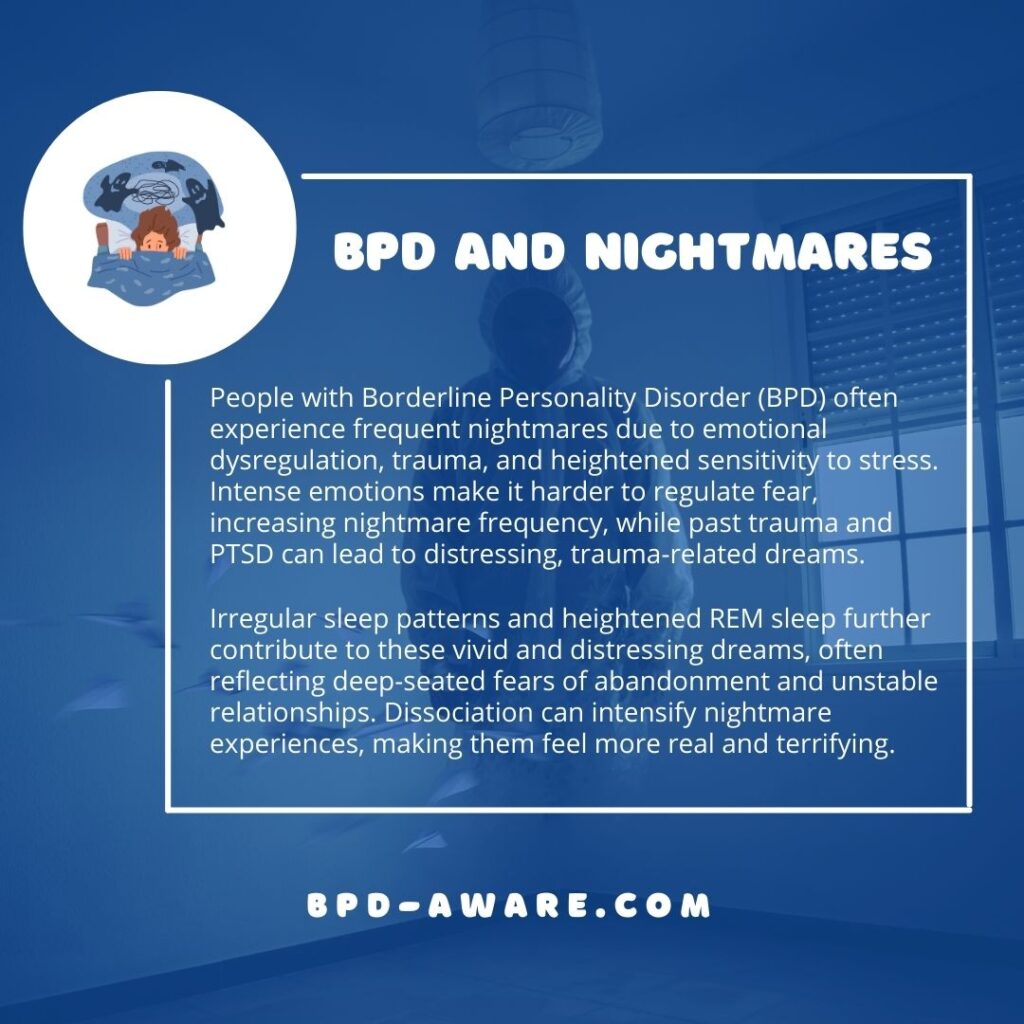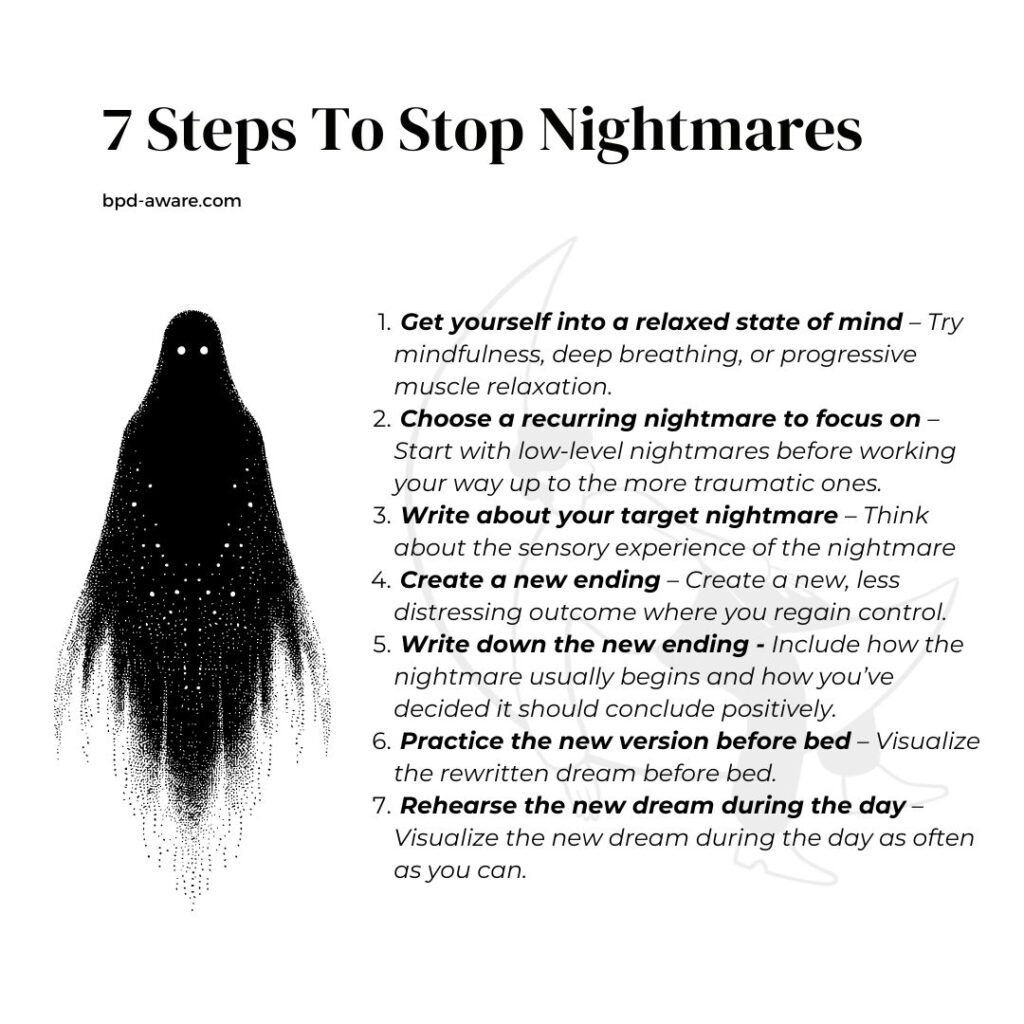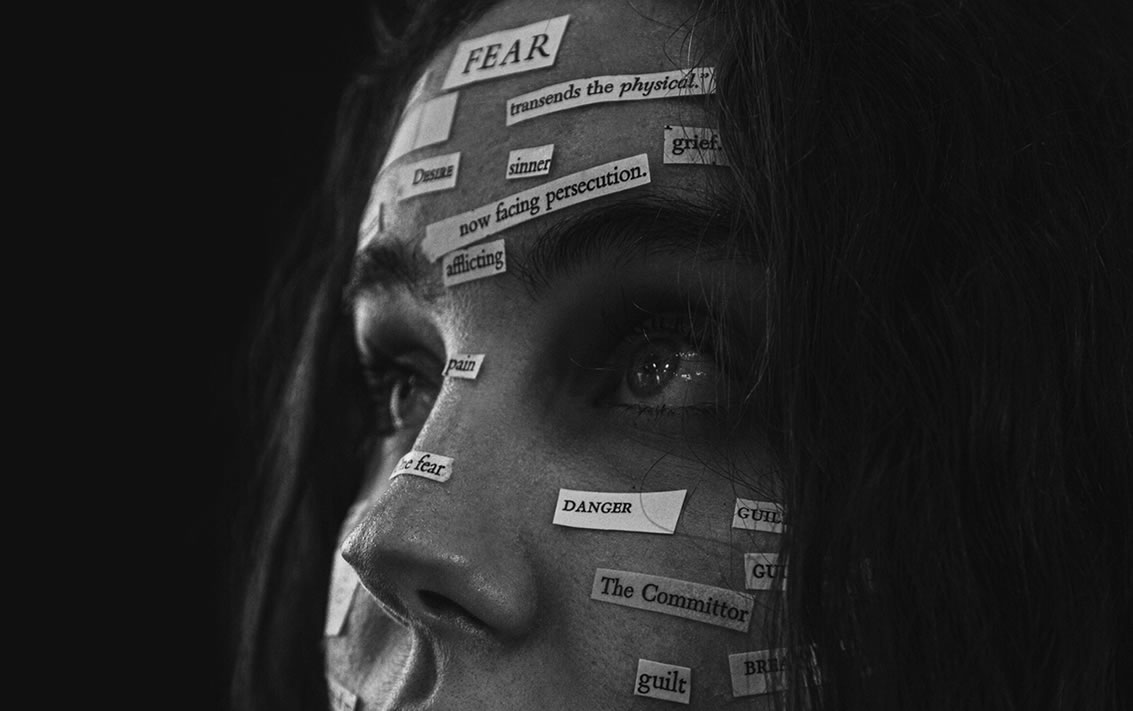Regular nightmares are a common problem for people with borderline personality disorder (BPD). While everyone experiences nightmares from time to time, for people with BPD they are often much more frequent, more intense, and can have a lasting impact.
While little research has been done on the link between BPD and nightmares, we can certainly make some educated guesses as to why those with BPD suffer from intense nightmares so frequently.
It’s believed that people dream partly as a way to process emotions. As people with BPD experience intense emotions, it stands to reason that their dreams may be more intense – including their nightmares. Many people with BPD have also suffered trauma throughout their lives, something that is known to cause recurring nightmares.
On a neurological level, people with BPD tend to have a hyperactive amygdala, which amplifies stress responses. Heightened stress can lead to anxiety dreams and nightmares.
Medication can also lead to disturbed sleep and nightmares. Many individuals with BPD take several medications to help deal with the symptoms of their disorder, which can have the side effect of causing nightmares.
Finally, the BPD tendency to dissociate during times of stress can also make nightmares much worse than they normally would be. Periods of dissociation can make it difficult to distinguish between the real world and the dream world. This can add an extra layer of fear to nightmares when the person can’t be sure if they’re awake or just dreaming.
How Nightmares Can Harm You
While we (thankfully) don’t live in a Nightmare on Elm Street type of world, nightmares can still cause genuine harm to your health. Nightmares can cause disturbed sleep either through waking up throughout the night or struggling to fall asleep in the first place. If you suffer from chronic, intense nightmares then sleep suddenly doesn’t seem like the relaxing, refreshing thing that it should.
Poor sleep is associated with heightened levels of stress, lower immune function, and impulsive behavior – three problems already associated with borderline personality disorder.
Thankfully, there is a skill you can learn that can help reduce both the frequency and intensity of nightmares. It’s called the Nightmare Protocol.

How To Perform Nightmare Protocol
Nightmare Protocol is a DBT skill designed to help reduce both the frequency and intensity of nightmares and improve sleep quality in general. It’s a seven-step skill that takes a little time and practice but can make a huge improvement to your sleep and mental health.
First, get yourself into a relaxed state of mind. Spend five or ten minutes getting yourself into a relaxed state of mind by meditating, performing progressive muscle relaxation, using self-hypnosis, listening to relaxing music, or anything else that helps you feel calm and relaxed.
Choose a recurring nightmare to focus on. This should be a relatively low-level nightmare to begin, nothing too traumatic. For example, a common anxiety dream for me was losing all my teeth. While it was an unpleasant dream, it didn’t involve past trauma. You can, as you develop the Nightmare Protocol skill, work your way up to more traumatic nightmares.
Write about your target nightmare and the sensations and emotions you experience within the dream. Think about the sensory experience of the nightmare. What do you see, hear, smell, or taste during the nightmare? What thoughts, feelings, and emotions does the nightmare draw from you?
Choose a new outcome for the nightmare. Create a positive ending for the nightmare before anything bad or traumatic happens within the dream. Going back to my example of losing my teeth, the changed outcome could be feeling my teeth actually becoming stronger and healthier than ever before. Remember, this is a dream, so your outcome can be as fantastical as you want! The idea is to give yourself a positive resolution which will eventually program your mind to believe this problem has been solved and no more time needs to be spent thinking about it.
Write down the nightmare with the new positive outcome. This doesn’t have to be too long, just a couple of paragraphs will do. Include how the nightmare usually begins and how you’ve decided it should conclude positively.
Mentally rehearse the new dream before bed. Before you go to bed, take a moment to mentally rehearse the outline of your old nightmare with its new outcome. Then get yourself into a relaxed state of mind like in the first step of Nightmare Protocol.
Rehearse the new dream during the day. Visualize the new dream during the day as often as you can. You’ll find that you have the dream with the positive ending that you created, or you may never have that nightmare again as you have created closure for yourself.
If you have multiple recurring nightmares then you can work your way through them, starting with the least traumatic to the most traumatic. With practice, you can greatly reduce the number of nightmares you have and the effect they may have on you.

Final Thoughts
A good night’s sleep is vital to mental health, especially when you have a condition like borderline personality disorder. Nightmares can have a profoundly negative effect on the quality of your sleep and sometimes even your desire to fall asleep in the first place.
However, with the use of Nightmare Protocol, you can train your brain to “solve” the nightmares that trouble you, providing you with closure, better rest, and much more pleasant dreams.
Please let us know if this has helped you in the comment box below.
Sources, Resources, and Further Reading
- Nightmares and the Brain: https://hms.harvard.edu/news-events/publications-archive/brain/nightmares-brain
- Nightmares Have Unique, Damaging Impact on BPD Sufferers: https://www.promises.com/addiction-blog/nightmares-have-unique-damaging-impact-on-bpd-sufferers/
- Saving lives by treating nightmares and insomnia in borderline personality disorder: https://www.honestsleep.com/blog/saving-lives-by-treating-nightmares-and-insomnia-in-borderline-personality-disorder
















